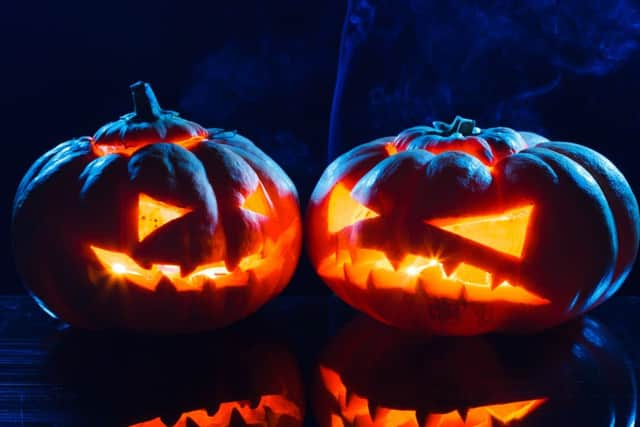12 things you might not know about Halloween


Here we look at the origins of some of those famous customs, from carving turnips to bobbing for apples.
Samhain
Halloween as we know it today stems from the Celtic festival Samhain (pronounced sah-win or sow-in), which was the Celtic new year. It was the day of the dead, the day when the veils between worlds was at its thinnest and when spirits (hopefully ancestors) could return to the world of the living.
All Hallow’s Eve
Advertisement
Advertisement
Later, when the festival was adopted by Christians, they celebrated it as All Hallows’ Eve, followed by All Saints Day, though it still retained elements of remembering and honouring the dead.
Summer’s End
Samhain means “summer’s end”. This day marked the end of the summer and the harvest, and the beginning of the cold dark winter.
‘Bone-fires’
To celebrate Samhain the Druids built huge sacred bonfires (originally called bone-fires, for after feasting, the bones were thrown in the fire as offerings for healthy and plentiful livestock in the New Year). People brought harvest food and sacrificed animals to share a communal dinner in celebration of the festival.
Dressing up
During the celebration the Celts wore costumes – usually animal heads and skins.
Playing games
Advertisement
Advertisement
As well as feasting, Pagans often celebrate Samhain with traditional games such as apple-dooking (still celebrated today)
Turnips or pumpkins?
Turnips were hollowed out and carved to look like protective spirits, for this was a night of magic and chaos. The Wee Folke became very active, pulling pranks on unsuspecting humans. The Halloween custom of turnip carving was taken to America by Irish immigrants, and since turnips weren’t cheap there, Americans used pumpkins instead.
‘Souling’
Trick-or-treating, to give it its American name, began in areas of the United Kingdom and Ireland. People went house-to-house “souling” – asking for small breads called “soul cakes” in exchange for prayer
Spirits possessed
The spirits were believed to be either “entertained by the living”, or to “find a body to possess for the incoming year”. This all gives reasons as to why “dressing up like witches, ghosts and goblins, villagers could avoid being possessed.”
Colours
Advertisement
Advertisement
Black and orange are typically associated with Halloween. Orange is a symbol of strength and endurance and along with brown and gold, stands for the harvest and autumn. Black is typically a symbol of death and darkness and acts as a reminder that Halloween once was a festival that marked the boundaries between life and death.
Wicce
The word “witch” comes from the Old English wicce, meaning “wise woman”. In fact, wiccan were highly respected people at one time. According to popular belief, witches held one of their two main meetings, or sabbats, on Halloween night.
Samhainophobia
Thousands of people suffer from Samhainophobia which is an irrational fear of Halloween.